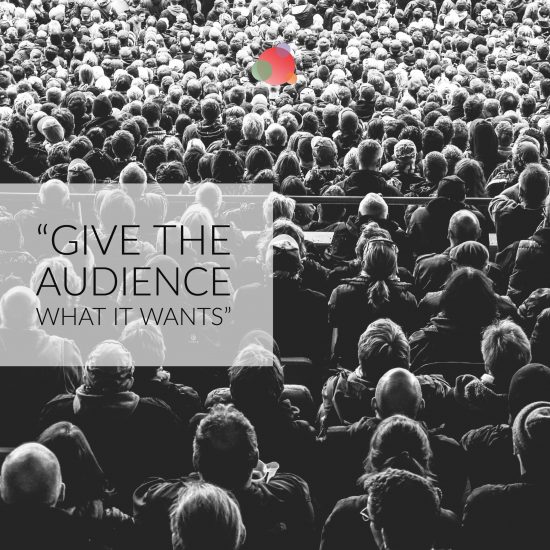During Episode 190 of This Old Marketing, Joe Pulizzi and Robert Rose discussed a New York Times piece on the Cannes Lions advertising festival.
People may not remember this segment, but I certainly do.
I’m the listener who submitted the story for their consideration.
And they completely missed why this article is so vital to the future of marketing.
The Real News Story
Here’s the bit that got my attention:
The race to grab your attention and hold it is leading to a new era of informational hedonism that’s doing more than shortening attention spans. It has given rise to the online silos that allow people to live in vastly different realities. If you enjoy and engage most with the news that supports your worldview—no matter its veracity—algorithms will naturally want to give you more of it. ~Jim Rutenberg/NYTimes
The bold bit is my addition, and in my opinion, is the real consequence of this “oil boom” of a content-marketing strike.
(Talk about “burying the lede.”)
The modern content marketing boom is a veritable geyser of blogs, videos, and quizzes—all designed to be the content that you, as an audience, want to see.
The important distinction here is “want to see”—because it’s not necessarily the content you need to see or should see.
“Give the Audience What it Wants”
As modern marketers and public relations professionals, we’re told to craft stories with our audiences in mind.
We constantly hear this exhortation to tune marketing efforts to our readers’ (or listeners’) desires:
- CMI blog: Give the People What They Want
- PR Week: Give Your Audience What It Wants: The Brand Reputation Roundtable
- Ross Simmonds: How to Write Content Your Audience Wants to Hear
Now, I can see folks dismissing this trend as, “Oh, they just want us to post more cat videos.”
(On a personal note, I’m all for more cat comic relief, interspersed with .gifs of dachshunds eating bananas.)
But the savvier among us—the truly dangerous and weaponized among us—will realize what I’ve begun to understand.
We were all wrong.
Content Marketing is Responsible for the Ideological Echo Chamber
If we only give audiences what they want in entertaining or “engaging” snippets, does that mean we should never challenge their way of thinking?
If that’s so, then our audience is never confronted to change for the “better.”
Their viewpoints are reinforced, rather than refined.
Therefore, by turning organizations and businesses into media companies—producing content with clear biases and priorities—have marketers and public relations professionals inadvertently created the siloed “echo chamber” that Jim Rutenberg called out in his New York Times article?
The repercussions of these echo chambers are frighteningly real on both micro- and macro-scales:
- Sixty percent of Millennials say their primary source of news is Facebook, which uses an algorithm to enhance user engagement and continuously “feeds” users similar content. (Check out Eli Pariser’s The Filter Bubble: What the Internet Is Hiding From You for more on this.)
- UK think-tank demos found people only engaged with material from companies who were most likely to “agree” with them, whether or not the information provided was correct or unbiased.
- Tim Riesterer, of Corporate Visions, discussed during a Content Marketing World workshop how people instinctively make decisions in their “emotional” mind, using their “rational” side to rationalize. They seek out information to justify their decision, instead of balancing their perspective.
At the present, we used that information to better promote our companies and their services to the easiest-converted.
My question to you is, should we?
The New Outreach Model
If we want to be more thoughtful marketers and PR professionals, we need to consider the following:
1. Know what kind of person you want as a potential customer.
Look at your audience personas, your targeted media outlets.
Who are the people who consume those sorts of materials? Are they folks your company would want to socialize with? Or would you dare not meet them alone?
Dump outreach designed for eyeballs, not ethics.
Instead, craft content that attracts an audience you’d be proud to call friends (or customers).
In this case, immeasurable KPIs—like who your company associates with—are worth more than raw analytics.
2. Ensure your talking points serve your audience in ways they need—not just what they want to hear.
An executive once tried to talk me out of posting a news story on our social media feed that might’ve helped all our clients.
Why? Apparently, if clients tried the recommendations, it would make the company’s job harder (and less profitable).
His company perspective was antithetical to what the audience—his clients—needed to hear in this case.
The problem was the company’s issue to solve, projected onto the customer.
In the end, we managed to resolve the issue to everyone’s satisfaction.
And the company is currently fixing those issues, should customers adopt the new model.
In this instance, it was the company-client who only wanted to hear a particular narrative.
By listening to what it needed—instead of focusing on what it wanted—the company now has a more forward-thinking plan.
Whew.
Well, that was the conversation I had hoped for on the This Old Marketing podcast.
And by the way, they do a great job of reviving this topic after I showed them a draft of what you’re reading now.
(Skip to minute 42 of episode 197 for the direct response.)
Let’s continue the conversation.
Are you reaching—and improving—an audience with which you’re proud to associate?
